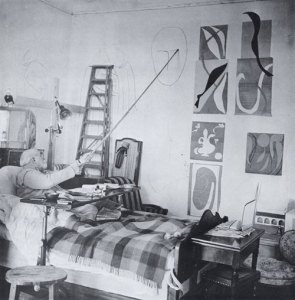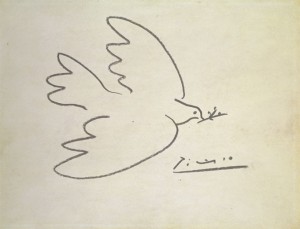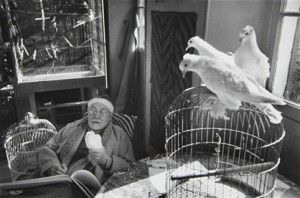For the conclusion of his 2010 BBC documentary, Modern Masters: Matisse, the British critic Alastair Sooke visited Matisse’s Vence Chapel in the south of France for the first time. In this segment, Sooke is overwhelmed by emotion, while he contemplates how the old, frail artist managed to have a final burst of creative energy at the very end of his life.
Designing the Chapel began in the late 1940s. Matisse, already in his late seventies, was recovering from surgery for intestinal cancer and had nearly died. His nurse was a former model, Monique Bourgeois, now a novice Dominican nun, Sister Jacques Marie.
The project confused his friends like Picasso, who knew Matisse was an atheist. Yet Matisse called the Chapel his ‘crowning achievement.’

Matisse drawing a head for the decoration of Chapelle du Rosaire in Vence (The Matisse Chapel) in his studio/room in the Hotel Regina, in Nice-Cimiez, 1950. Photo by Walter Carone/Paris Match.
To celebrate the Museum of Modern Art’s exhibition, The Cut-Outs, which opened this month, the Café presents Sooke’s moving tour of the the Dominican Chapel of the Rosary in Vence, France. Or as most of the world knows it — Matisse’s Chapel.


